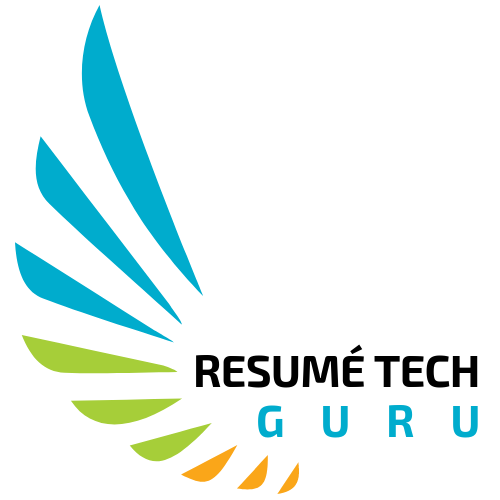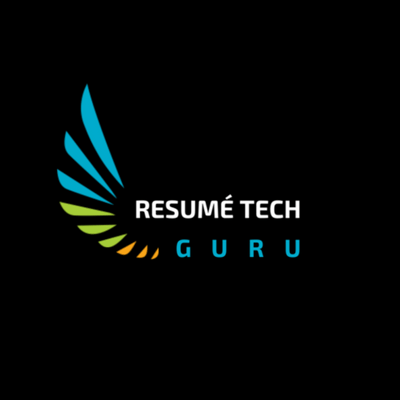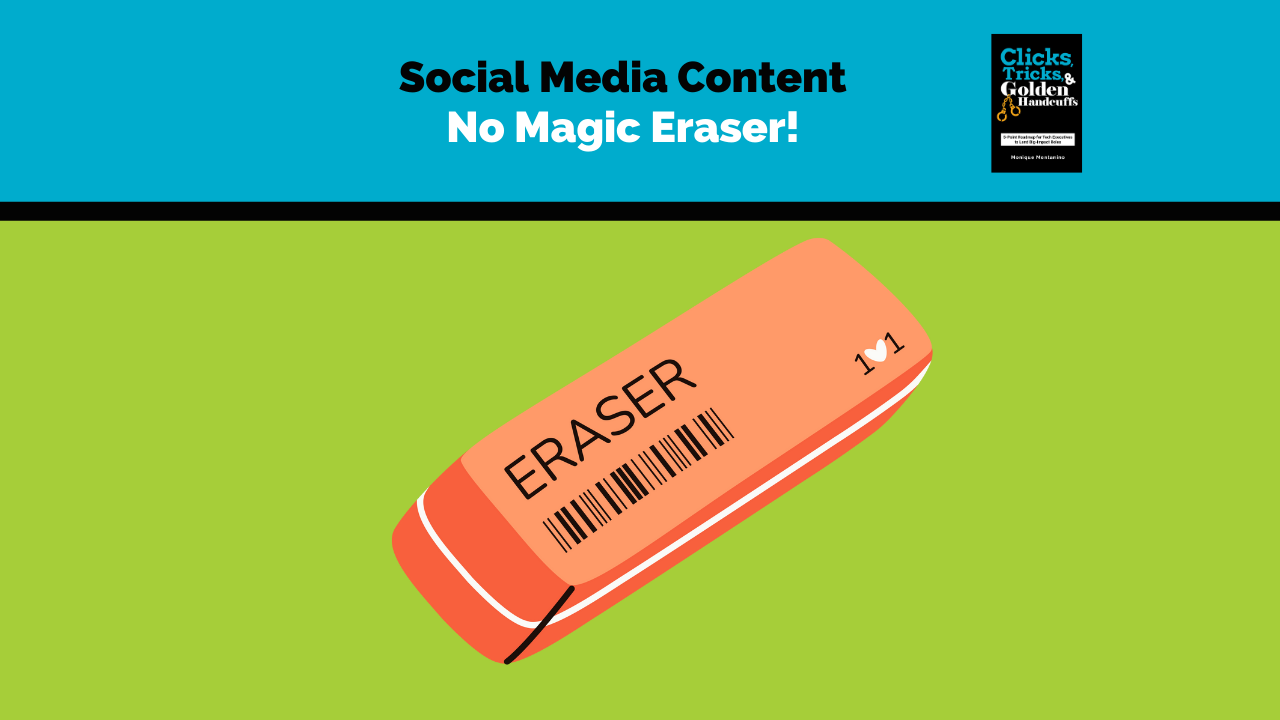Your personal data is floating out on the internet. Whether you like it or not. When it comes to your social media presence, there’s no magic eraser.
How you appear online contributes to your career professional brand, whether that is your business profile on LinkedIn or your personal Facebook account.
In a Harris Poll of U.S. hiring decision-makers, 71% believe applicants’ social media profiles are an effective screening mechanism. In addition, the majority (67%) say they use social networking sites to research potential job candidates. Also, 21% would pass on a job seeker if they lacked a social media account.
If a hiring manager googled you, how would you show up? Would you be in consideration if a recruiter searched LinkedIn to fill an executive-level position at a cloud enterprise company or a startup? If you don’t know, it’s time to take control of your electronic footprint for your next career opportunity.
Social Media Statistics
A Statista report published in July 2023 revealed that Facebook was the first social network on the precipice of 3 billion registered accounts. The report discusses other social network platforms; some weren’t on my radar. The top 10 list appears below, rank-ordered by active users from 2.989 billion on Facebook to 700 million on Telegram. For some reason, LinkedIn didn’t make the list. They measure in with 950 million professionals, a higher subscriber number than Snapchat.
- YouTube
- TikTok
- Facebook Messenger
- Snapchat
- Douyin
- Telegram
Regarding my initial question, how do you appear to a hiring manager on these social media sites? Are your accounts locked down or wide open? If the latter, I recommend that you keep a prospective company in mind regarding your postings and images. Are you entitled to your personal opinions outside the company about politics, religion, hobbies, and newsmakers? Absolutely. I am not saying to squash your thoughts; remember another person’s potentially conflicting point of view. In short, please do not say anything negative on social media; it might hurt your job prospects.
Lessons from Google
Yes, I google myself to optimize my business opportunities, not out of vanity. My first and last name results lean toward a professional POV with LinkedIn, my website www.resumetech.guru, and Amazon, where my book is published, securing the top three spots.
For my consulting brand presence, I conduct a quarterly Google search. I pay attention to how I fare based on keywords clients would use to find me, including “Seattle tech resume writer” and “executive career coach.” Initially, I spent a lot of time on my two Google business listings, geo-targeting Seattle and Austin. It took a couple of years for my business name, Resume Tech Guru, to appear on the first page of a Google search based on the keywords “Seattle resume writer.”
When I launched my website a couple of years ago, I paid for Google AdWords and ran several advertising campaigns. Although they did not yield the referral results I hoped for, the analytics showed what keywords drove traffic to my websites. Good news: resume writing was a top keyword. Bad news: resume builder was also a significant keyword, but I do not offer an automated version. In the first year of my consulting practice, a Monster Insights report revealed that my website bounce rate was high. If you are unfamiliar with the term, it is the percentage of website visitors who navigate away (or bounce off your site) after viewing only a single page.
What I have learned about social media may apply to you for becoming a recruiter attraction magnet.
Wiping the Slate Clean: Social Media Eraser
Last year, a client surprised me when discussing paying for an Internet reputation scrubber. He paid someone $250 to bury his public speaking appearances related to negative content, i.e., some colorful language he had used that appeared on tech industry association websites.
Now, if you don’t know an online reputation fixer, there are several steps you can take to remove items outside of the sites that you manage.
- Reach out to website owners and request removal of detrimental content
- Create new profiles and publish new content that will assist in burying negative search results
- Request to remove personal information on Google
- Hire a full-service online reputation management company
LinkedIn Social Selling Index
Over 15 years ago, a CenturyLink colleague, Jeff Dennison, introduced me to LinkedIn. First, I was apprehensive about joining because I needed to understand the business value for professional networking. Like the invitation-only Clubhouse (remember that?), I thought, what value would this bring to my life? Remember the early days on LinkedIn when pop-ups barraged you for colleagues’ skill endorsement requests like whack-a-mole?
LinkedIn’s purpose changed when I was looking for a new career adventure after one too many Embarq and CenturyLink M&As. I hired a certified resume writer in Seattle and repurposed components for my LinkedIn profile. These two tools had recruiters contact me regarding technology marketing opportunities. After weighing external and internal job options, I stayed at CenturyLink but moved from marketing to an executive sales role, and LinkedIn took on a new meaning. LinkedIn became the way to connect my tech account base, prospects, and channel partners to share corporate resources.
One-third of my career consulting clients come from LinkedIn, balanced by client referrals and my website. My social imprint is money in the bank. That is why it should be important to you and your career. If you find a higher-paying role, you are accruing incremental investment income. Is it easier to have recruiters come to you versus the other way around?
One way to view your professional image is by accessing the LinkedIn Sales Navigator at www.linkedin.com/sales/ssi. It features a free Social Selling Index (SSI) analysis based on four components:
- Establish your professional brand: Complete your LinkedIn profile with the hiring manager or recruiter in mind. Become a thought leader by publishing meaningful articles regarding your tech domain expertise.
- Find the right people: Identify potential network connections for your next tech role in less time using efficient search and research tools.
- Engage with insights: Discover and share conversation-worthy updates to create and grow business relationships within your industry. Create posts and respond with comments to other colleagues’ posts.
- Build relationships: Strengthen your professional network by finding and establishing trust with decision-makers. Building a virtual network augments in-person industry trade shows and conferences.
While actively posting content (engaging with insights) on LinkedIn, my SSI is 68 out of 100. My score reveals being in the top 9% of my LinkedIn network and the top 26% within the Human Resources industry classification. My SSI changes based on my weekly activity; spikes occur when I publish a post but not necessarily when I post articles. It is a strange phenomenon since articles take longer for me to develop than a random post. The LinkedIn algorithm throttles the distribution of posts, comments, and articles to your direct connections. Be forewarned that only some of your relationships see what you post, or they receive a delayed appearance in their LinkedIn feed. I found that out a couple of months ago when a colleague’s post hit my feed three days after he posted it.
Key Takeaways
What is your bounce rate?
How you appear on social media can put you in the executive search consideration set or diminish a terrific opportunity at another company seeking your skill sets. If you abandoned your Facebook page, haven’t recently looked at your Twitter feed, or neglected your LinkedIn profile, think of it as Fall cleaning. Now is the time to conduct your annual social media performance reviews.
Become your social media magical mistake eraser.
Best to you in your job search!



